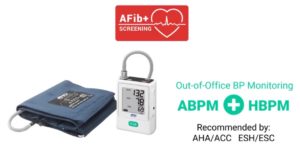Low Carb Diet is Putting You at Risk of Atrial Fibrillation
There is no shortage of diets out there and you probably have tried at least one of them. A popular one is the low carb diet such as Ketogenic (Keto) that many follow in hopes of losing weight and staying healthy fast. However, a recent study has suggested that over time a low carb diet can increase the risk of Atrial Fibrillation. Anything done in extreme is never good and while a high amount of carbohydrates is bad for the health, so is too little.
Atrial Fibrillation
This is a disorder in which the rhythm of the heartbeat is affected. In this disorder, the heartbeat of the individual quivers frequently. This happens because the heart is not pumping blood properly, which can cause blood pools and the formation of clots. If any of these blood clots ruptures, it can travel up to the brain causing a stroke.
The Study
According to the study 1 Zhuang, Xiaodong & Zhang, Shaozhao & Zhou, Huimin & Du, Zhimin & Liao, Xinxue. (2019). U-Shaped Relationship Between Carbohydrate Intake Proportion And Incident Atrial Fibrillation. Journal of the American College of Cardiology. 73. 4. 10.1016/S0735-1097(19)33766-0. , individuals who consume less than 45% calories from carbohydrates have an 18% higher chance of developing Atrial Fibrillation as compared to individuals who consumed moderate amounts of carbohydrates. The researchers stated that this risk still exists even when those carbohydrates are replaced with protein.
In this study, data from the U.S. National Institutes of Health study was reviewed, which included around 14,000 individuals. None of those individuals had Atrial Fibrillation at the start of the study. However, after 22 years, around 1,900 of those individuals had developed Atrial Fibrillation.
All the individuals filled out a diet-related survey and were divided into high carb, moderate carb, and low carb intake. The findings showed that both high and low carb intake was associated with an increased risk of Atrial Fibrillation and premature deaths.
Possible Causes
While the main aim of this study was to merely find a link rather than a cause and effect, the researchers pointed out that there can be several reasons these negative consequences occur due to the low carb diet.
The low carb diet results in rapid loss of weight, which is achieved by flushing out the fluids from your body. This can lead to dehydration, which is one of the causes of Atrial Fibrillation. Moreover, these diets might also lead to electrolyte abnormalities that affect the rhythm of the heartbeats.
The research also highlighted the fact that in low carb diets, individuals consume fewer amounts of grains, fruits, and vegetables; which are the foods that reduce the inflammation in the body. As a result, individuals on a low carb diet experience a high level of inflammation, which is also associated with Atrial Fibrillation.
What To Do Instead
There are various versions of law carb diets that people follow. Some individuals restrict the consumption of desserts, pastas, and bread which can be good for health. However, some diets call for limiting the consumption of healthy foods like legumes, fruits, and vegetables. This means that they are not getting sufficient amounts of fibre and nutrients.
When it comes to dieting, it is important to follow a well-balanced diet which includes seeds, nuts, legumes, whole grains, vegetables, and fruits. The diets which are more plant based reduce the risk of many health issues.




 AF-related strokes cause unacceptably high levels of death and disability, and the scale of the problem across Europe is increasing as our populations age.
AF-related strokes cause unacceptably high levels of death and disability, and the scale of the problem across Europe is increasing as our populations age.
 Ambulatory Blood Pressure Monitors (ABPMs) provide testing to determine the presence of hypertension by taking measurements during normal daily activities, over a span of 24 (or more) hours. They help to diagnose as well as monitor high blood pressure (hypertension), usually defined as a systolic pressure of 140 mm Hg or more and a diastolic pressure of 90 mm Hg or more.
Ambulatory Blood Pressure Monitors (ABPMs) provide testing to determine the presence of hypertension by taking measurements during normal daily activities, over a span of 24 (or more) hours. They help to diagnose as well as monitor high blood pressure (hypertension), usually defined as a systolic pressure of 140 mm Hg or more and a diastolic pressure of 90 mm Hg or more.